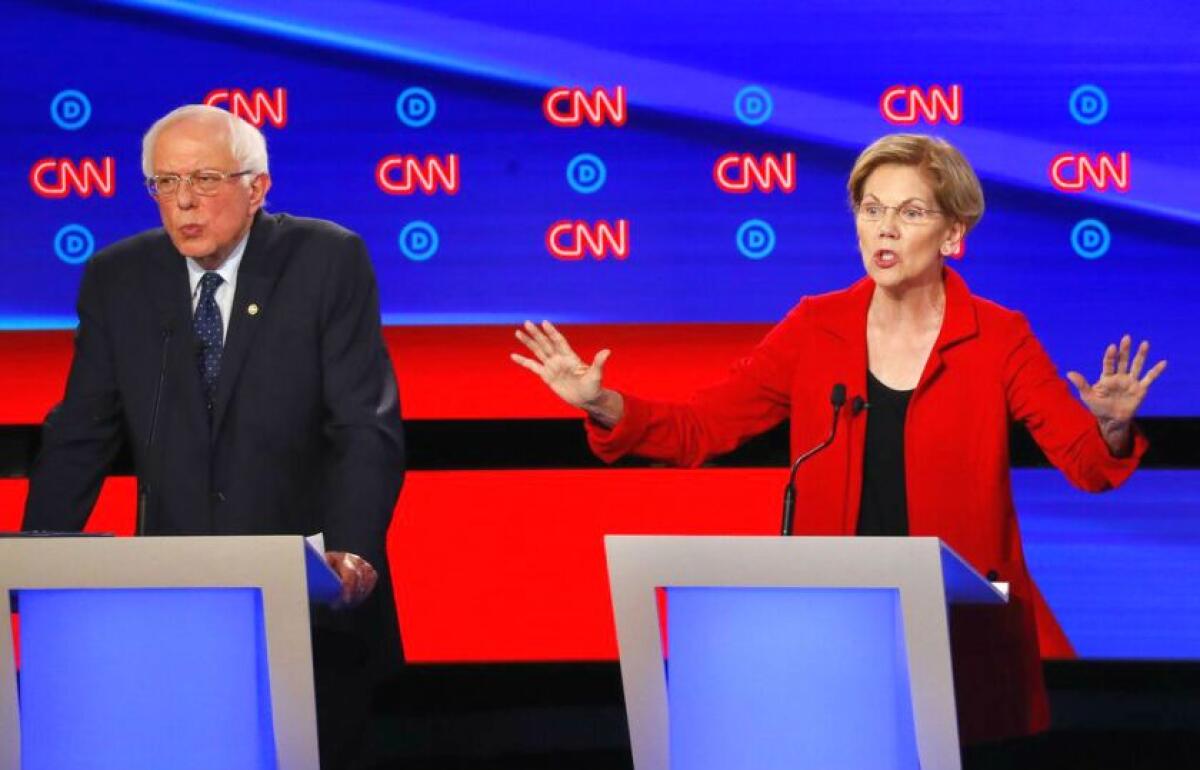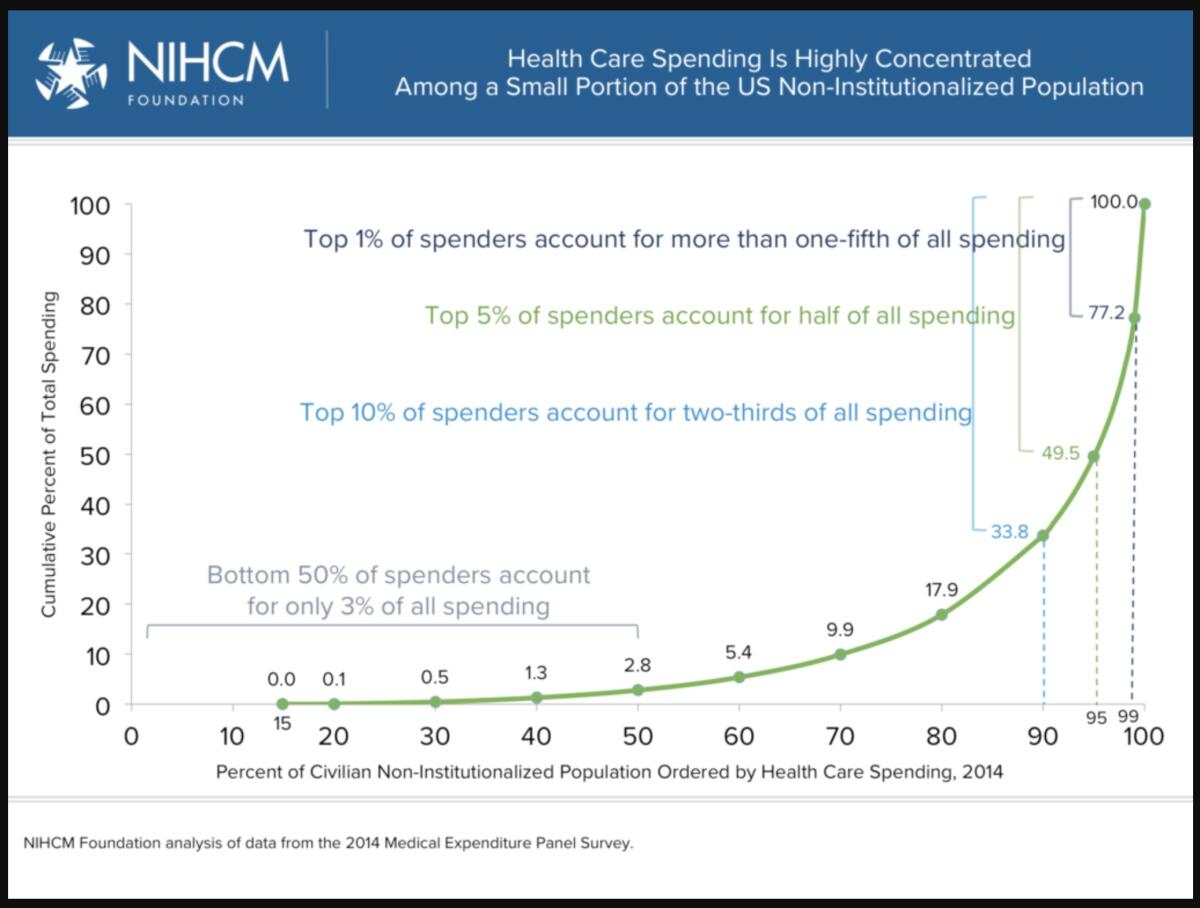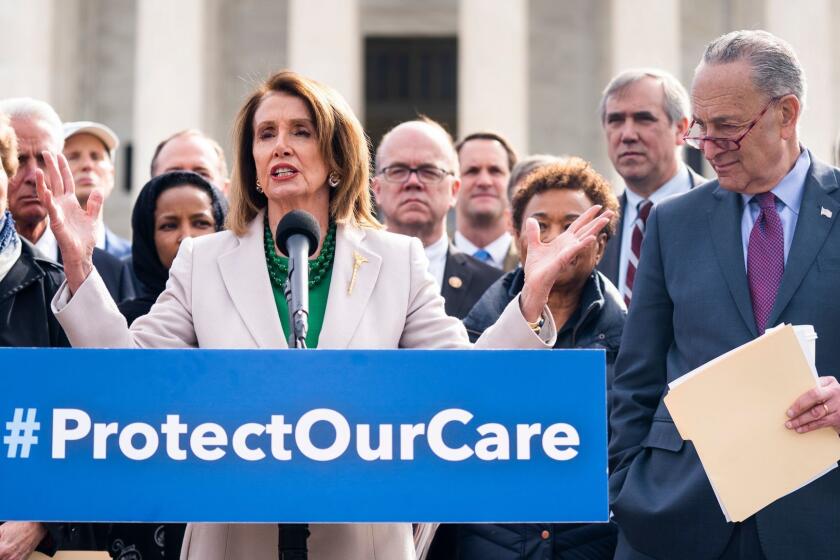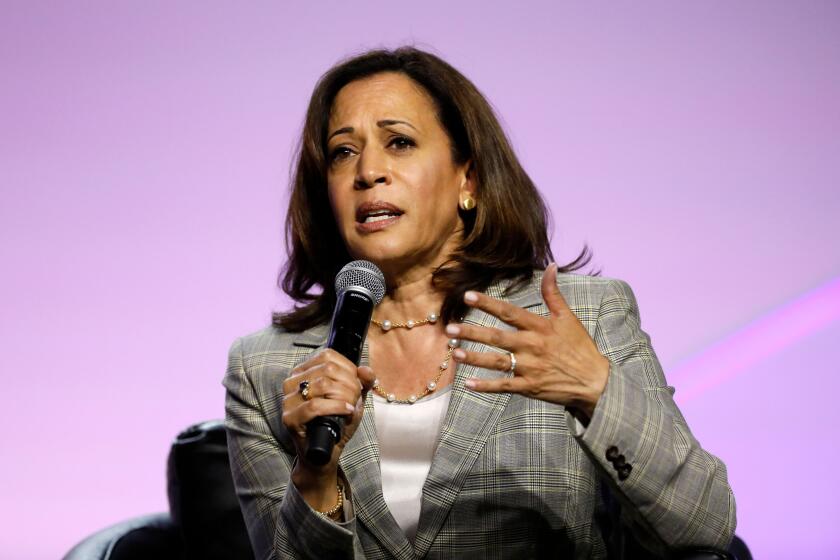Column: Health insurance companies are useless. Get rid of them

The most perplexing aspect of our current debate over healthcare and health coverage is the notion that Americans love their health insurance companies.
This bizarre idea surfaced most recently in the hand-wringing over proposals to do away with private coverage advocated by some of the candidates for the Democratic nomination for president. Oddly, this position has been treated as a vote-loser.
During the first round of televised debates on July 30 and 31, only four of the 20 candidates raised their hands when asked if they would ban private insurers as part of their proposals for universal coverage: Sens. Elizabeth Warren of Massachusetts, Bernie Sanders of Vermont and Kamala Harris of California, and New York Mayor Bill de Blasio. Harris later backed away, releasing a âMedicare for allâ proposal that would accommodate private insurers at least for the first 10 years.
Health insurers have been successful at two things: making money and getting the American public to believe theyâre essential.
— Health insurance expert Wendell Potter
She should have stood her ground. The truth is that private health insurers have contributed nothing of value to the American healthcare system. Instead, they have raised costs and created an entitled class of administrators and executives who are fighting for their livelihoods, using customersâ premium dollars to do so.
âHealth insurers have been successful at two things: making money and getting the American public to believe theyâre essential,â says Wendell Potter. He should know, because he spent decades as a corporate communications executive in the industry, including more than 10 years at Cigna.
We know all about the benefits in store for us when big hospital chains merge and bigger health insurance companies grow even bigger: Lower prices.
The insurersâ success in making themselves seem essential accounts for the notion that Americans are so pleased with their private coverage that theyâll punish any politician who dares to take it away. But the American love affair with private insurance warrants close inspection.
Letâs start by examining what the insurers say are their positive contributions to healthcare. They claim to promote âconsumer choice,â simplify âthe healthcare experience for individuals and families,â address âthe burden of chronic diseaseâ and harness âdata and technology to drive quality, efficiency, and consumer satisfaction.â (These claims all come from the website of the industryâs lobbying organization, Americaâs Health Insurance Plans (AHIP).
What do we need health insurers for anyway?
Theyâve achieved none of these goals. The increasingly prevalent mode of health coverage in the group and individual markets is the narrow network, which shrinks the roster of doctors and hospitals available to enrollees without heavy surcharges. The hoops that customers and providers often must jump through to get claims paid impose costly complexity on the system, not simplicity. Programs to manage chronic diseases remain rare, and the real threat to patients with those conditions was lack of access to insurance (until the Affordable Care Act made such exclusion illegal).
Private insurers donât do nearly as well as Medicare in holding down costs, in part because the more they pay hospitals and doctors, the more they can charge in premiums and the more money flows to their bottom lines. They havenât shown notable skill in managing chronic diseases or bringing pro-consumer innovations to the table.

(Image source: NIHCM)
Insurers cite these goals when they try to get mergers approved by government antitrust regulators. Anthem and Cigna, for example, asserted in 2016 that their merger would produce nearly $2 billion in âannual synergies,â thanks to improved âoperationalâ and ânetwork efficiencies.â
The pitch has a long history. The architects of a wave of health insurance mergers in the 2000s also proclaimed a new era of efficient technology and improved customer service, but studies of prior mergers show that this nirvana seldom comes to pass. The best example may be that of Aetnaâs 1996 merger with U.S. Healthcare in a deal it hoped would give it access to the booming HMO market.
According to a 2004 analysis by UC Berkeley health economist James C. Robinson, the merger became a ânear-deathâ experience for Aetna. The deal was expected to bring about âmillions in enrollment and billions in revenue to pressure physicians and hospitalsâ to accept lower reimbursement rates, he wrote.
Aetna claimed this summer that it was pulling out of all but four of the 15 states where it was providing Obamacare individual insurance because of a business decision â it was simply losing too much money on the Obamacare exchanges.
âThe talk was all about complementarities, synergies, and economies of scale.... The reality quickly turned out to be one of incompatible product designs, operating systems, sales forces, brand images, and corporate cultures.â Aetna surged from 13.7 million customers in 1996 to 21 million in 1999, but profits collapsed from a margin of nearly 14% in 1998 to a loss in 2001.
Even when they donât happen, insurance merger deals cost customers billions of dollars. Thatâs what happened when two proposed deals â Aetna-Humana and Anthem-Cigna â broke down on a single day in 2017. The result was that Aetna owed Humana $1.8 billion and Anthem owed Cigna $1.85 billion in breakup fees â money taken out of the medical treatment economy and transferred from one set of shareholders to another.
In reality, Americans donât like their private health insurance so much as blindly tolerate it. Thatâs because the vast majority of Americans donât have a complex interaction with the healthcare system in any given year, and most never will. As weâve reported before, 1% of patients account for more than one-fifth of all medical spending and 10% account for two-thirds. Fifty percent of patients account for only 3% of all spending.
The worst maladies of the American healthcare system are related to corporate profits: The competition among insurance companies to avoid the sickest customers and extract the most money from the rest, and the rise of for-profit healthcare providers.
Most families face at most a series of minor ailments that can be routinely managed â childhood immunizations, a broken arm here or there, a bout of the flu. The question is what happens when someone does have a complex issue and a complex claim â theyâre hit by a truck or get a cancer diagnosis, for instance?
âWe gamble every year that weâre going to stay healthy and injury-free,â Potter says. When we lose the gamble, thatâs when all the inadequacies of the private insurance system come to the fore. Confronted with the prospect of expensive claims, private insurers try to constrain customersâ choices â limiting recovery days spent in the hospital, limiting doctorsâ latitude to try different therapies, demanding to be consulted before approving surgical interventions.
Indeed, the history of American healthcare reform is largely a chronicle of steps taken to protect the unserved groups from commercial health insurance practices.
After grousing for years about the individual insurance market created by the Affordable Care Act â and providing fuel for the ACAâs enemies â the health insurance industry is finding Obamacare to be a profit center.
When commercial health insurance became insinuated into the American healthcare system following World War II via employer plans, it quickly became clear who was left behind â âthose who were retired, out of work, self-employed, or obliged to take a low-paying job without fringes,â sociologist Paul Starr wrote in his magisterial 1982 book, âThe Social Transformation of American Medicine.âThe process even left those groups worse off, Starr observed, because insurance contributed to medical inflation while insulating only those with health plans. âGovernment intervention was required just to address the inequities.â
Insurers wouldnât cover the aged or retirees, so Medicare was born in 1965. Insurers refused to cover kidney disease patients needing dialysis, so Congress in 1973 carved out an exception allowing those patients to enroll in Medicare at any age. (So much for addressing the âburden of chronic disease.â)
Individual buyers were charged much more for coverage than those buying group plans through their employers â or were barred from the marketplace entirely because of their medical conditions. The Affordable Care Act required insurers to accept all applicants and, as compensation, required all individuals to carry at least minimal coverage.
Kamala Harrisâ Medicare for all plan would fulfill the promise of universal health coverage.
The health insurance industryâs most telling contribution to the debate over healthcare reform has been âto scare people about other healthcare systems,â Potter told me. As a consequence, discussions about whether or how to remove private companies from the healthcare system are chiefly political, not practical.
The Affordable Care Act allowed private insurers to continue playing a role in delivering coverage not because they were any good at it but because their wealth and size made them formidable adversaries to reform if they chose to fight it. They were sufficiently mollified to remain out of the fray, but some of the big insurers then did their best to undermine the individual insurance exchanges once they were launched in 2015.
Even as individual Americans fret over losing their private health insurance, big employers have begun to see the light. Boeing, among other big employers, is experimenting with bypassing health insurers as intermediaries with providers by contracting directly with major health systems in Southern California, Seattle and other regions where it has major plants. It would not be surprising to see the joint venture of Amazon, Berkshire Hathaway and JPMorgan Chase try a similar approach in its quest to bring down costs.
Thatâs an ironic development, since the private insurers first entered the market precisely by offering to play the role of intermediaries for big employers. But instead of fulfilling the promise of efficiency and cost control, they became rent-seeking profiteers themselves.
Thereâs no doubt that it will take years to wean the American healthcare system off the private insurance model; Kamala Harrisâ proposal may be merely a recognition of the necessary time frame. Itâs true that some countries with universal healthcare systems preserve roles for private insurance, including coverage for services the government chooses to leave out of its own programs or providing preferential access to specialists, at a price.
But the private insurersâ central position in Americaâs system is an anachronism dating back some 75 years. The sooner itâs dispensed with, the better off â and healthier â America will be. The next time a debate moderator asks presidential candidates if they favor doing away with private insurance, letâs see all the hands go up.
More to Read
Inside the business of entertainment
The Wide Shot brings you news, analysis and insights on everything from streaming wars to production â and what it all means for the future.
You may occasionally receive promotional content from the Los Angeles Times.













